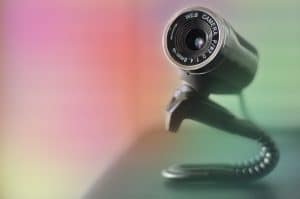A study published in the Annals of Internal Medicine shows that clinicians spend an average of 16 minutes per patient just managing electronic health records (EHRs). Over a full day, that time adds up quickly, pulling healthcare professionals away from what matters most: patient care. Pair this with communication breakdowns, scheduling inefficiencies, and administrative overload, and it’s no wonder why workflow inefficiencies are a major challenge in healthcare.
These inefficiencies aren’t just inconvenient—they’re costly. Time lost to poorly designed workflows affects patient satisfaction, staff morale, and operational budgets. But the good news is that these challenges can be tackled with targeted strategies that reimagine how healthcare workflows operate.
In this article, we’ll explore expert-recommended strategies to improve healthcare workflow efficiency, including actionable tips on EHR optimisation, reducing administrative burdens, and using healthcare technology for better outcomes. These insights will help your practice save time, cut costs, and deliver exceptional patient care. Let’s get started!
-
Reduce Administrative Burden with Automation
Administrative work is one of the biggest time drains in healthcare. Tasks like scheduling, billing, and managing patient records can overwhelm staff and leave them little time for patient interactions. Automating these processes can lead to significant improvements in workflow efficiency.
For example, automated appointment scheduling tools can handle confirmations, reminders, and cancellations without requiring manual intervention. This not only saves time but also reduces patient no-shows. According to this survey, clinics using automated reminders saw a 30% reduction in no-show rates. Automated billing systems can also flag errors in real time, speeding up claims processing and improving cash flow.
Actionable Tip: Begin by automating repetitive tasks, such as appointment reminders and follow-up communications. Over time, expand automation to include insurance verification and claims processing to maximise time savings.Look for automation software that integrates with your existing EHR system. This ensures a cohesive workflow and eliminates the need for staff to switch between platforms.
-
Improve Communication with Real-time Solutions
Communication failures are responsible for over 70% of sentinel events according to The Joint Commission. Outdated methods like pagers or phone chains can delay critical updates, impacting patient care.
Switching to real-time communication tools, such as secure messaging platforms, enhances coordination among healthcare teams. For instance, a hospital in California implemented a secure messaging app that allowed teams to share updates instantly, resulting in faster patient handoffs and better care outcomes.
Actionable Tip: Choose a secure, HIPAA/GDPR-compliant messaging system that integrates with your EHR. Set up dedicated channels for specific departments to make communication more efficient and minimise cross-talk.
-
Use Data to Identify Bottlenecks
Healthcare organisations collect vast amounts of data daily, but much of it remains untapped. Predictive analytics can help identify inefficiencies, such as high patient wait times or underutilised resources, and provide insights for improvement.
For example, a study by McKinsey & Company found that hospitals using advanced analytics improved operational efficiency by up to 30%.
Actionable Tip: Start with simple metrics like patient flow and appointment durations, then scale up to predictive models as your organisation grows comfortable with analytics tools.
-
Standardise Clinical Processes for Consistency
Variability in clinical workflows can lead to inefficiencies and errors. Standardisation ensures that staff follow the same protocols, leading to more predictable outcomes and fewer delays.
A study published in The New England Journal of Medicine found that implementing surgical safety checklists reduced complications by 35%. This approach can be extended to other areas, like patient intake and discharge, to improve workflow consistency.
Actionable Tip: Invest in a system that supports standardised pathways, enabling clinicians to follow evidence-based protocols for common conditions. Systems with this feature guide users through consistent workflows while allowing flexibility for individual patient needs, ensuring both efficiency and high-quality care. Regularly review and update these pathways to align with the latest clinical guidelines and organisational objectives.
-
Adopt Patient-Centred Technology
Patient portals and telehealth platforms not only enhance patient engagement but also improve workflow efficiency. A study by HIMSS Analytics found that using patient portals demonstrated a 21% decrease in emergency department admissions (per 1,000) and a 38% decrease in hospital admissions (per 1,000) after seven months.
These tools allow patients to schedule appointments, view test results, and request refills independently. Telehealth platforms further reduce the need for in-person visits, streamlining workflows for follow-ups and minor consultations.
Actionable Tip: Promote patient portals through email campaigns and in-office signage. Offer brief tutorials during appointments to help patients navigate these tools.
-
Invest in Staff Training for Long-Term Efficiency
Technology alone isn’t enough—your team needs the skills to use it effectively. Research published by the National Library of Medicine highlights that proper EHR training can significantly improve productivity. By saving 4 to 5 minutes or more per hour on documentation, training not only boosts efficiency but also improves the quality, readability, and accuracy of clinical records. Additionally, it contributes to fewer medical errors and streamlines tasks like chart reviews and data retrieval, ultimately supporting better patient care and optimised workflows.
Training should go beyond basic system use. Focus on teaching staff how to use advanced features, such as automated alerts or data visualisation tools, to enhance efficiency. Cross-training employees for multiple roles can also provide flexibility during high-demand periods.
Actionable Tip: Create a training calendar that includes both onboarding sessions for new hires and periodic refreshers for current staff. Incorporate real-life scenarios to make the training more engaging. Choose technology providers who offer training as part of their packages.
Conclusion: Smarter Workflows for Better Care
Improving healthcare workflow efficiency is a continuous journey that requires a mix of technology, training, and data-driven decision-making. From automating administrative tasks to leveraging patient-centred technology, every small improvement can lead to meaningful gains in productivity, staff satisfaction, and patient outcomes.
Remember, even small changes can lead to big results. Start with one or two strategies and build on your success. With a thoughtful approach, you’ll transform workflows into a seamless system that benefits everyone—from clinicians and administrative teams to the patients they serve.





